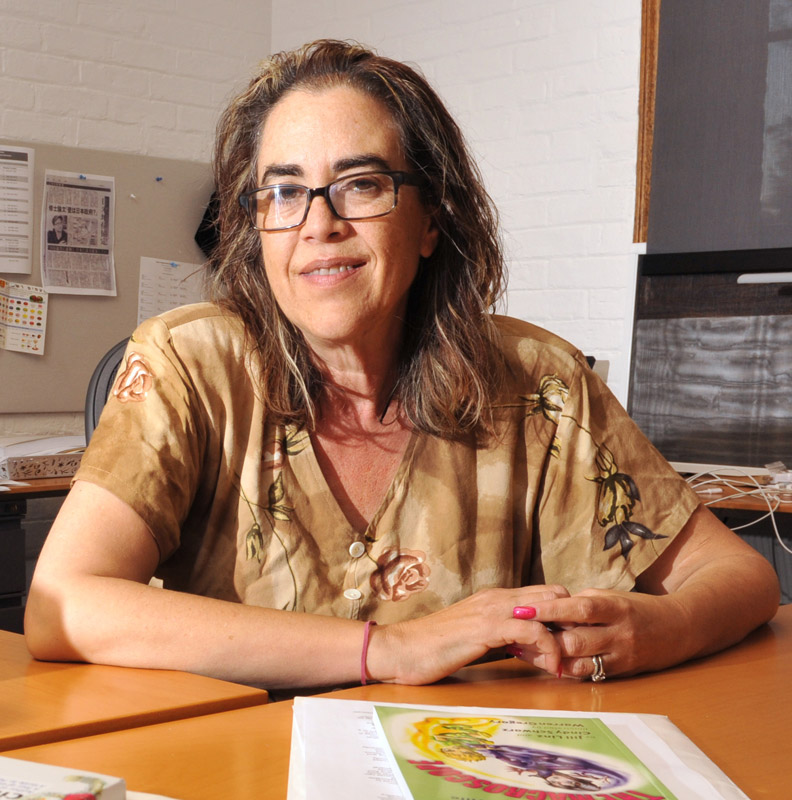Interacting With Physics

Vassar physics professor Cindy Schwarz has been teaching at Vassar for 30 years and was an early adopter of technology in the classroom. At the start of the 1990s, she used a program called Interactive Physics that allowed the user to create simulations on the computer and visualize physics problems. This was brand new technology at the time and it was “nice,” says Schwarz, but it wasn’t enough. She wanted her students to be able to ask “what if” questions, to change the variables of a problem to see how/if the outcome would change. So, in 1996 she wrote The Interactive Physics Workbook, a first-of-its-kind physics-teaching tool. “It took the technology and used it the way it was meant to be used,” says Schwarz, “to investigate things that we couldn’t investigate otherwise in our laboratories or classrooms.” The second edition was published in 2004.
This well-regarded book—with an accompanying CD that allows students to run simulations—is currently being updated and expanded. Schwarz has been asked by the software company to take the original workbook and split it into three curricula: middle school, high school/college (the original), and upper-level undergraduate.
“What’s really amazing is that this project was worked on this past summer by three physics students and two art students,” says Schwarz. The physics students supplied the science know-how, while the art majors brought the simulations closer to reality by using their talents to create elements such as astronauts, cavemen, construction workers, bugs, and cars.
“There are no physics simulations like this out there. These are just visually stunning, intuitive, and mind-blowing.” This collaboration between Schwarz and studio arts professor Peter Charlap served as a pilot for Creative Arts Across the Disciplines, a Vassar initiative funded by the Andrew W. Mellon Foundation that aims to integrate the arts into other areas of study.
The physics department has long used an online homework system. It allows students several attempts to correctly answer a problem, with hints along the way. Receiving multiple tries and immediate feedback, students not only know if they’re getting the concept but when they’re getting it, enabling them to reach out for added assistance, if needed. According to Schwarz, the average homework score for Vassar physics students is an impressive 90 percent.
Students are not the only ones who benefit from the online homework system. It also enables physics faculty members to identify the trouble spots and then address those concepts in class while they are still fresh in students’ minds. The online homework systems also can aid the instructor in identifying students who may need some extra help.
Located in the newly renovated, state-of-the-art Sanders Physics building, the Collaborative Learning Classroom, which Schwarz helped to design, is full of innovative technology: a large SMART Board plus two smaller ones for student group work, 24 iPads, 12 tablet PCs, and 12 MacBook Airs. Students work with applications on the iPads and program the PCs and Macs.
Schwarz compares teaching with a SMART Board to using “PowerPoint on steroids.” Using a program called SMART Notebook, the instructor prepares material in advance, just like a PowerPoint presentation, but with the interactive and touch sensitivity of a SMART Board, the material isn’t stagnant. It can be altered—written on and added to on the spot—making it relevant to and meaningful for the current lesson.
Personal response system “clickers” in the classroom allow students, when asked questions by the professor, to choose their answers using a remote device. The results are then displayed—anonymously—for the whole class to see. Any errors may then be addressed by the instructor.
“It’s probably the highest-tech classroom on campus,” Schwarz says, and moreover, it offers the flexibility to use various levels of technology when they are most useful for teaching.
“That’s my main motto here,” says Schwarz. “You shouldn’t use technology just because you can. You have to use it effectively, and you have to use it because it’s going to give you some kind of pedagogical advantage.”
With that in mind, Schwarz has begun to share her knowledge of physics on a whole new level: elementary school. She’s co-writing a “science” fiction series of books called “Adventures in Atomville,” aimed at children in grades two through six. The first completed book, Adventures in Atomville: The Macroscope, follows the animated adventures of Niles and Livve, two atoms that accidentally invent a “macroscope” and discover the strange and mysterious world of human beings. It’s available in print and a newer electronic version (iPad, Nook, and Kindle) that allows the reader to interact with the colorful storyline.
She wanted children to understand physics at an early age, so she made it fun. “At the end of every chapter in the iBook version there’s a little quiz the kids can take and interactive activities, too. They learn about tiny little particles without ever really knowing there’s science in the book. They read it as an adventure story.”
